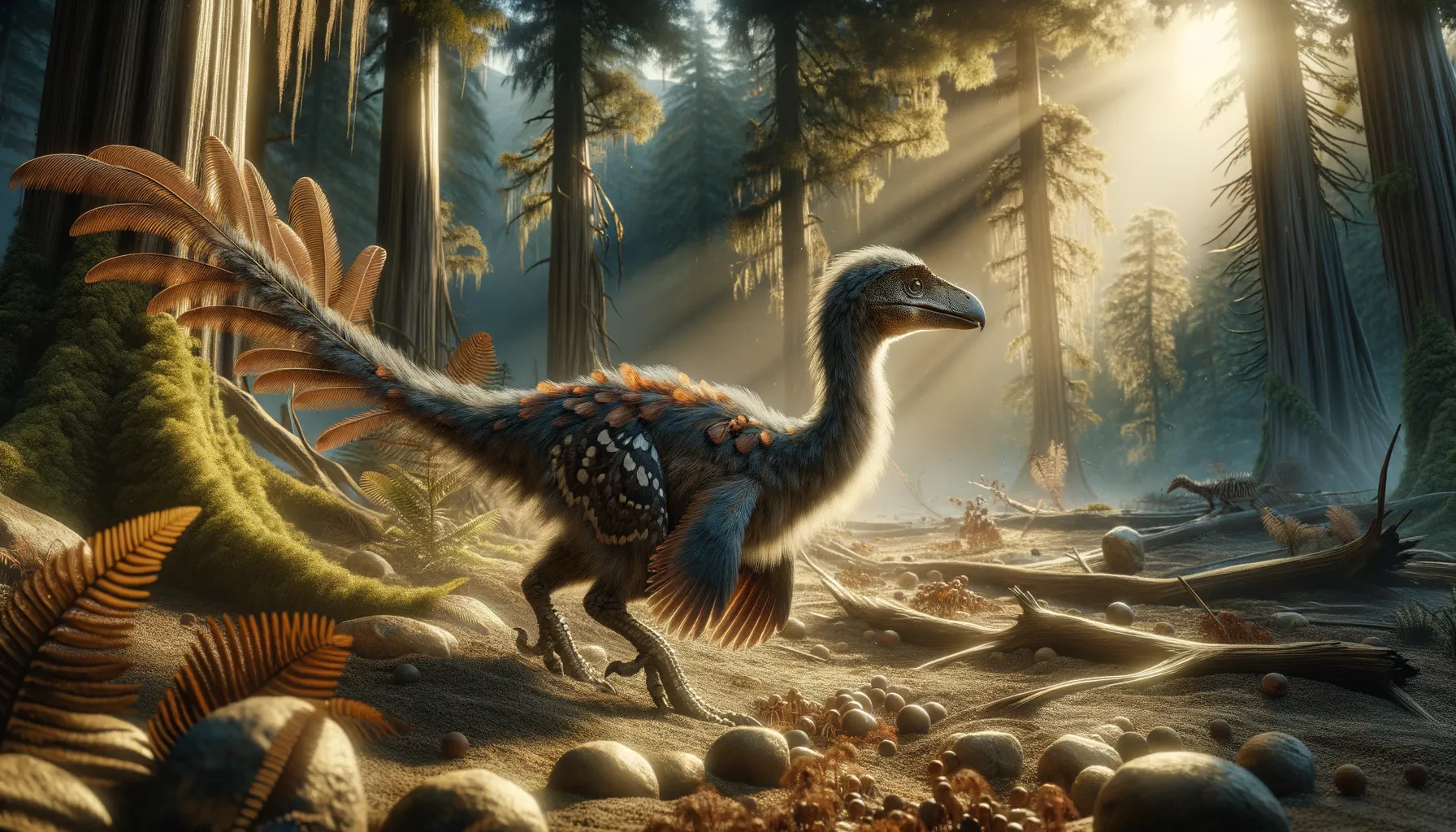
Jeholornis
A bird bridging dinosaur and avian worlds.
Period
Cretaceous
Length
About 70 centimeters in length.
Height
Around 50 centimeters tall.
Weight
Approximately 1 to 1.5 kilograms.
Jeholornis was an early bird that roamed during the Cretaceous period. It had a unique combination of both primitive and modern characteristics, making it a fascinating link in avian evolution. Its diet likely included seeds and small plants, supported by a digestive system that suggests adaptation to a herbivorous diet. With its long tail adorned with feathers, Jeholornis adds valuable insight into the transition from dinosaurs to modern birds.
Diet
Jeholornis was largely herbivorous, primarily feeding on seeds and small plants. Its beak and digestive system were well-suited for handling tough plant material, though it may have occasionally consumed insects.
Hunting
Unlike typical hunters, Jeholornis foraged for food on the ground and in trees. Its ability to fly allowed it to access various regions abundant in seeds, reducing the need for aggressive hunting tactics.
Environmental challenges
Jeholornis faced predators from the skies and ground, including larger theropods and early predatory birds. To evade threats, it developed strong climbing and moderate flying abilities, allowing quick escapes. Periodic environmental changes meant this small bird had to adapt quickly to shifting food sources. The diverse ecosystems of the Cretaceous era presented a mix of bountiful and barren periods, demanding adaptability.
Speed
Moderate flier, not very fast on ground.
Lifespan
Could live around 10 to 15 years.
First discovery
First discovered in Liaoning Province, China in the early 2000s.
Fun Facts
- Jeholornis was a dinosaur that lived around 120 million years ago during the early Cretaceous period.
- It had a long bony tail, which was unusual for early birds.
- Jeholornis sported a combination of dinosaur and bird features, like clawed wings and a beak.
- This dinosaur is known from fossils found in what is now northeastern China.
- Jeholornis was about the size of a modern-day pigeon, making it one of the smaller dinosaurs.
- It likely ate plants and fruits, thanks to its beak, which was better suited for such a diet.
- Jeholornis is a great example of how birds evolved from dinosaurs.
Growth and Development
Young Jeholornis likely grew rapidly, reaching maturity within a few years to increase survival chances. Like modern birds, they probably depended on their parents for protection and food until they could fend for themselves. Development stages might have included growth spurts, especially in wing and tail feathers crucial for flying.
Habitat
Jeholornis inhabited dense forests in what is now northeastern China, teeming with lush plant life and providing ample food. These regions had a warm climate, supporting diverse flora and fauna, ideal for a herbivorous lifestyle. The varied elevations in forests allowed Jeholornis to exploit both ground and arboreal niches.
Interaction with other species
Jeholornis likely coexisted with various small mammals and early birds, competing for similar food sources. Their social behavior might have been influenced by the need to establish territories. To avoid conflict, Jeholornis may have developed niche feeding habits, reducing direct competition.
Natural lifespan
In the wild, Jeholornis could live up to 15 years.
Reproduction
Jeholornis likely laid eggs in nests built in trees, similar to many modern birds. Parental care was probably provided, ensuring high survival rates among offspring by protecting them from predators. Nesting in elevated locations would help avoid ground-dwelling threats and provide easier access to food.
Social behaviour
Jeholornis may have lived in small flocks, which helped with foraging and alerted them of approaching predators. Communication likely included sounds or visual displays for coordinating group movements. While generally peaceful, disputes over nesting sites or food could occur.
Fossil locations
Fossils of Jeholornis have been primarily found in the Yixian Formation, Liaoning Province, China. These sites have provided valuable insight into the diversity and ecological conditions of the Cretaceous period. The well-preserved fossils include impressions of feathers, aiding in understanding its appearance and lifestyle.
